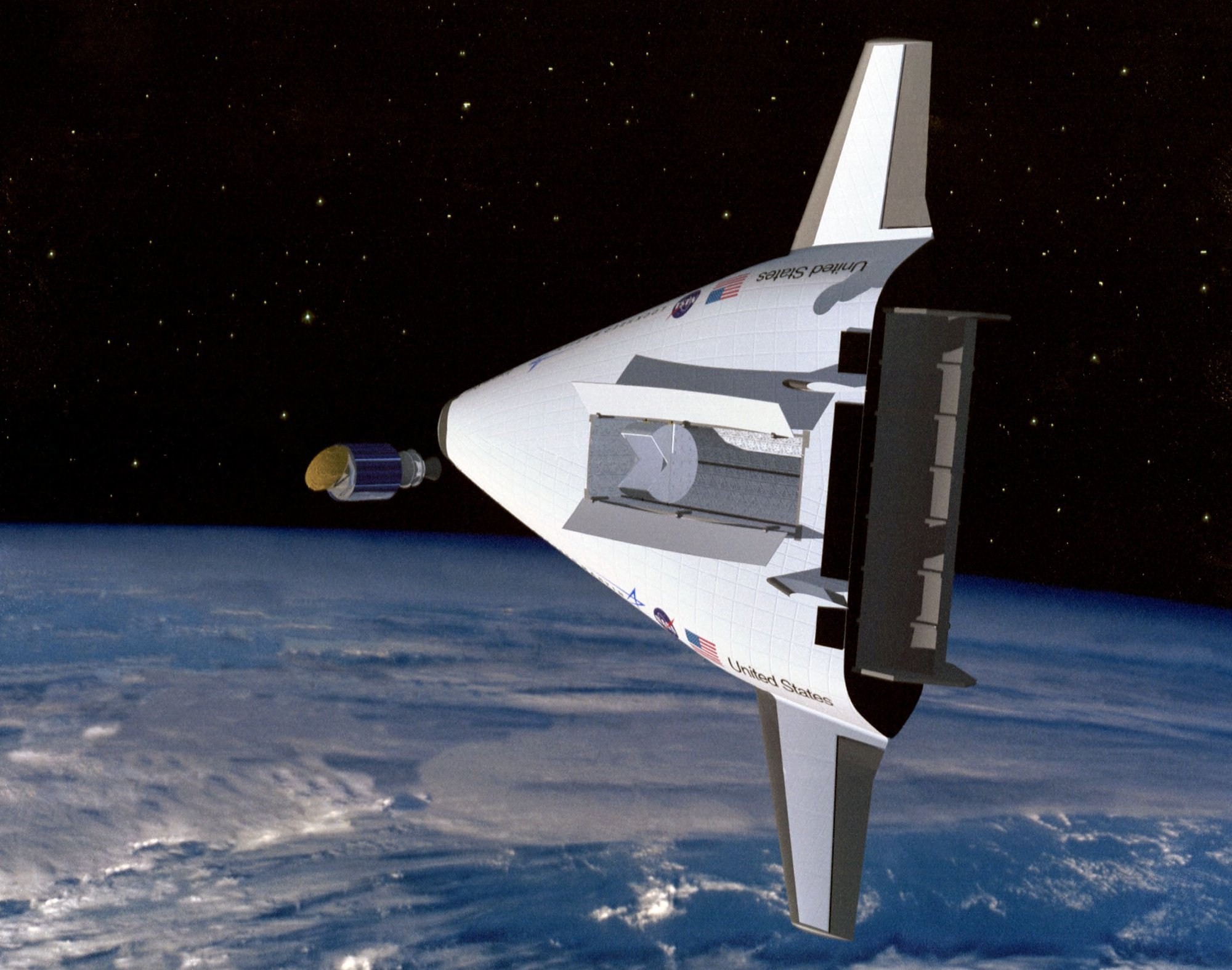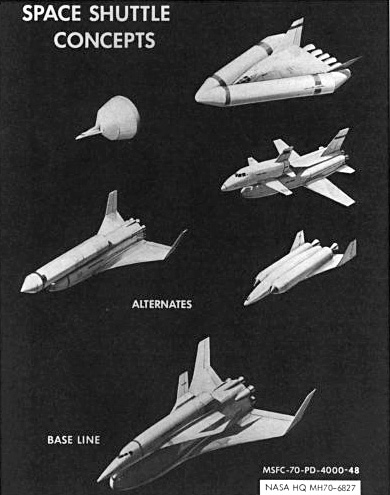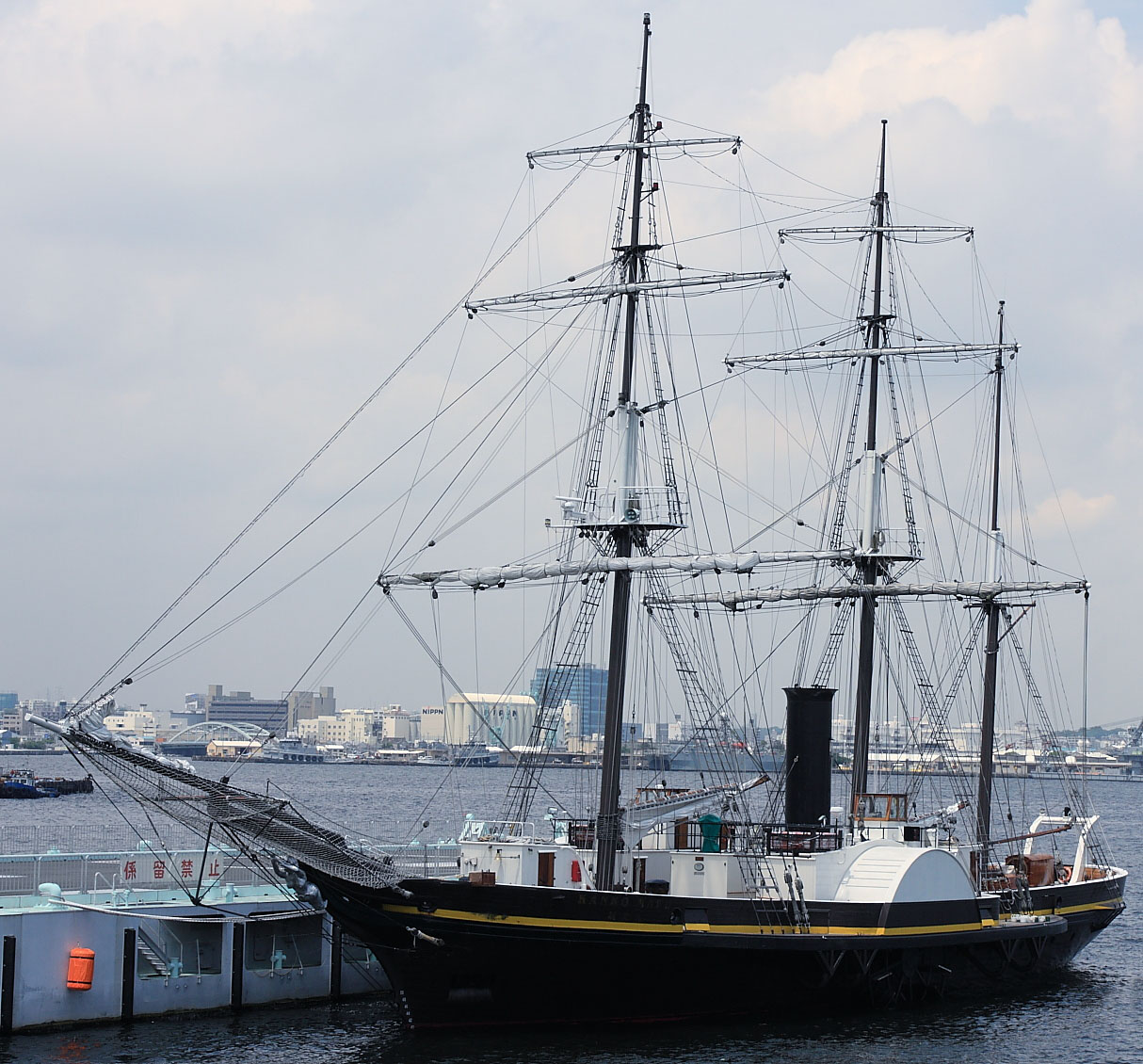|
Kankoh-maru
The is a proposed vertical takeoff and landing (VTVL), single-stage-to-orbit (SSTO), reusable launch system ( rocket-powered spacecraft). According to a document from July 1997, it would have been manufactured by Kawasaki Heavy Industries and Mitsubishi Heavy Industries, with its formal name being the Kawasaki S-1. Overview The concept was created by the in 1993. This development cost was estimated ¥2.67 trillion ( $28 billion) in 1995. The name '' Kankō Maru'' is derived from the first steam-powered vessel in Edo-era Japan. See also * Chrysler SERV * VentureStar * Reusable Vehicle Testing program by JAXA The is the Japanese national air and space agency. Through the merger of three previously independent organizations, JAXA was formed on 1 October 2003. JAXA is responsible for research, technology development and launch of satellites into orb .../ ISAS * Blue Origin New Shepard * Falcon 9 Full Thrust References External links Encyclopedia Astronaut ... [...More Info...] [...Related Items...] OR: [Wikipedia] [Google] [Baidu] |
VTVL Rockets
Vertical takeoff, vertical landing (VTVL) is a form of takeoff and landing for rockets. Multiple VTVL craft have flown. The most widely known and commercially successful VTVL rocket is SpaceX's Falcon 9 first stage. VTVL technologies were developed substantially with small rockets after 2000, in part due to incentive prize competitions like the Lunar Lander Challenge. Successful small VTVL rockets were developed by Masten Space Systems, Armadillo Aerospace, and others. Starting in the mid-2010s, VTVL was under intense development as a technology for reusable rockets large enough to transport people. In 2013, SpaceX demonstrated vertical landing on a Falcon 9 prototype after climbing 744 meters in the air. Later, Blue Origin (New Shepard) and SpaceX (Falcon 9), both demonstrated recovery of launch vehicles after return to the launch site (RTLS) operations, with Blue Origin's New Shepard booster rocket making the first successful vertical landing on November 23, 2015, foll ... [...More Info...] [...Related Items...] OR: [Wikipedia] [Google] [Baidu] |
Single-stage-to-orbit
A single-stage-to-orbit (SSTO) vehicle reaches orbit from the surface of a body using only propellants and fluids and without expending tanks, engines, or other major hardware. The term usually, but not exclusively, refers to reusable vehicles. To date, no Earth-launched SSTO launch vehicles have ever been flown; orbital launches from Earth have been performed by either fully or partially expendable multi-stage rockets. The main projected advantage of the SSTO concept is elimination of the hardware replacement inherent in expendable launch systems. However, the non-recurring costs associated with design, development, research and engineering (DDR&E) of reusable SSTO systems are much higher than expendable systems due to the substantial technical challenges of SSTO, assuming that those technical issues can in fact be solved. SSTO vehicles may also require a significantly higher degree of regular maintenance. It is considered to be marginally possible to launch a single-stage- ... [...More Info...] [...Related Items...] OR: [Wikipedia] [Google] [Baidu] |
Kawasaki Heavy Industries
(or simply Kawasaki) is a Japanese public multinational corporation manufacturer of motorcycles, engines, heavy equipment, aerospace and defense equipment, rolling stock and ships, headquartered in Chūō, Kobe and Minato, Tokyo, Japan. It is also active in the production of industrial robots, gas turbines, pumps, boilers and other industrial products. The company is named after its founder, Shōzō Kawasaki. KHI is known as one of the three major heavy industrial manufacturers of Japan, alongside Mitsubishi Heavy Industries and IHI. Prior to the Second World War, KHI was part of the Kobe Kawasaki '' zaibatsu'', which included Kawasaki Steel and Kawasaki Kisen. After the conflict, KHI became part of the DKB Group (''keiretsu''). History Shōzō Kawasaki, born in 1836, was involved with the marine industry from a young age. He was involved with two offshore disasters but accredited his survival to the modernization of the ships. This led to the decision to create te ... [...More Info...] [...Related Items...] OR: [Wikipedia] [Google] [Baidu] |
JAXA
The is the Japanese national air and space agency. Through the merger of three previously independent organizations, JAXA was formed on 1 October 2003. JAXA is responsible for research, technology development and launch of satellites into orbit, and is involved in many more advanced missions such as asteroid exploration and possible human exploration of the Moon. Its motto is ''One JAXA'' and its corporate slogan is ''Explore to Realize'' (formerly ''Reaching for the skies, exploring space''). History On 1 October 2003, three organizations were merged to form the new JAXA: Japan's Institute of Space and Astronautical Science (ISAS), the National Aerospace Laboratory of Japan (NAL), and National Space Development Agency of Japan (NASDA). JAXA was formed as an Independent Administrative Institution administered by the Ministry of Education, Culture, Sports, Science and Technology (MEXT) and the Ministry of Internal Affairs and Communications (MIC). Before the merger ... [...More Info...] [...Related Items...] OR: [Wikipedia] [Google] [Baidu] |
Reusable Vehicle Testing
The Reusable Vehicle Testing (RVT) project was conducted by the Japanese Space Agency (JAXA) from 1998 until 2003. The project involved a series of experimental vehicles to test repeated flights of a reusable rocket. Four complete vehicles were developed during the project. The design of the experimental vehicles addressed various technical challenges for future Reusable Launch Vehicles (RLV) such as flight on demand, quick turnaround, higher performance, lightweight structures and materials. The project involved ground and flights tests with the flight testing conducted at the Institute of Space and Astronautical Science (ISAS) Noshiro Rocket Testing Center in the northern part of Japan's main island. JAXA proposed to develop a reusable high altitude rocket based on the technologies demonstrated in the RVT project. The rocket would take a payload of about 100 kg to an altitude of 100 km. RVT-derived equipment such as engines and attitude control will be used. The de ... [...More Info...] [...Related Items...] OR: [Wikipedia] [Google] [Baidu] |
Chrysler SERV
SERV, short for Single-stage Earth-orbital Reusable Vehicle, was a proposed space launch system designed by Chrysler's Space Division for the Space Shuttle project. SERV was so radically different from the two-stage spaceplanes that almost every other competitor entered into the Shuttle development process that it was never seriously considered for the shuttle program. SERV was to be a single-stage to orbit spacecraft that would take off from the existing Saturn V complexes and land vertically at Kennedy for re-use. SERV looked like a greatly expanded Apollo capsule, with an empty central core able to carry of cargo. SERV could be launched uncrewed for cargo missions, ejecting a cargo capsule and returning to Earth. For crewed missions, a separate spaceplane, MURP (Manned Upper-stage Reusable Payload), could be carried atop the vehicle. The name "SERV" was also used by an entirely unrelated NASA project, the "Space Emergency Re-entry Vehicle". History Background In 1966 the ... [...More Info...] [...Related Items...] OR: [Wikipedia] [Google] [Baidu] |
Japanese Barque Kankō Maru
was Japan's first steam-powered warship. It was presented to the Tokugawa shogunate ruling Japan during the Bakumatsu period as a gift from King William III of the Netherlands to assist Janus Henricus Donker Curtius, head of the Nederlandsche Handel-Maatschappij (Netherlands Trading Society) in Japan in his efforts to establish formal diplomatic relations and the opening of Japanese ports to Dutch merchant vessels. Background Since the beginning of the seventeenth century, the Tokugawa shogunate ruling Japan pursued a policy of isolating the country from outside influences. Foreign trade was maintained only with the Dutch and the Chinese and was conducted exclusively at Nagasaki under a strict government monopoly. No foreigners were allowed to set foot in Japan, and no Japanese was permitted to travel abroad.W. G. Beasley, ''The Meiji Restoration'', p.74-77 In June 1635 a law was proclaimed prohibiting the construction of large, ocean-capable vessels. However, by the early ni ... [...More Info...] [...Related Items...] OR: [Wikipedia] [Google] [Baidu] |
United States Dollar
The United States dollar (symbol: $; code: USD; also abbreviated US$ or U.S. Dollar, to distinguish it from other dollar-denominated currencies; referred to as the dollar, U.S. dollar, American dollar, or colloquially buck) is the official currency of the United States and several other countries. The Coinage Act of 1792 introduced the U.S. dollar at par with the Spanish silver dollar, divided it into 100 cents, and authorized the minting of coins denominated in dollars and cents. U.S. banknotes are issued in the form of Federal Reserve Notes, popularly called greenbacks due to their predominantly green color. The monetary policy of the United States is conducted by the Federal Reserve System, which acts as the nation's central bank. The U.S. dollar was originally defined under a bimetallic standard of (0.7735 troy ounces) fine silver or, from 1837, fine gold, or $20.67 per troy ounce. The Gold Standard Act of 1900 linked the dollar solely to gold. From 1934, its ... [...More Info...] [...Related Items...] OR: [Wikipedia] [Google] [Baidu] |
Kankō Maru
was a after '' Chōhō'' and before '' Chōwa.'' This period spanned the years from July 1004 through December 1012. The reigning emperors were and . Change of Era * 1004 : The era name was changed to mark an event or series of events. The previous era ended and a new one commenced in ''Kankō'' 6, on the 20th day of the 7th month of 1004. Events of the ''Kankō'' Era * March 17, 1008 (''Kankō 5, 8th day of the 2nd month''): The former-Emperor Kazan died at the age of 41. * July 16, 1011 (''Kankō 8, 13th day of the 6th month''): In the 5th year of Emperor Ichijō's reign (一条天皇5年), he abdicated; and the succession (‘‘senso’’) was received by his cousin. Shortly thereafter, Emperor Sanjō is said to have acceded to the throne (‘‘sokui’’). * July 15, 1011 (''Kankō 8, 22nd day of the 6th month ''): ''Daijō-tennō'' Ichijō died at the age of 32. * November 21, 1011 (''Kankō 8, 24th day of the 10th month''): ''Daijō-tennō'' Reizei, who was ... [...More Info...] [...Related Items...] OR: [Wikipedia] [Google] [Baidu] |
Japanese Yen
The is the official currency of Japan. It is the third-most traded currency in the foreign exchange market, after the United States dollar (US$) and the euro. It is also widely used as a third reserve currency after the US dollar and the euro. The New Currency Act of 1871 introduced Japan's modern currency system, with the yen defined as of gold, or of silver, and divided decimally into 100 ''sen'' or 1,000 ''rin''. The yen replaced the previous Tokugawa coinage as well as the various ''hansatsu'' paper currencies issued by feudal ''han'' (fiefs). The Bank of Japan was founded in 1882 and given a monopoly on controlling the money supply. Following World War II, the yen lost much of its prewar value. To stabilize the Japanese economy, the exchange rate of the yen was fixed at ¥360 per US$ as part of the Bretton Woods system. When that system was abandoned in 1971, the yen became undervalued and was allowed to float. The yen had appreciated to a peak of ¥271 per US$ i ... [...More Info...] [...Related Items...] OR: [Wikipedia] [Google] [Baidu] |






